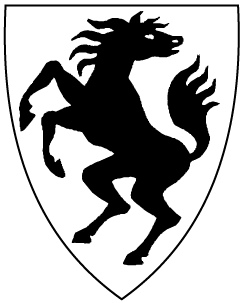
Climate ranking of Norwegian municipalities
Who will be most affected by climate change in the future? Who is most vulnerable? And who is doing the most to adapt?
We present here NORADAPT 's first comprehensive climate ranking of all Norwegian municipalities. NORADAPT have gathered data on expected climate and societal changes, and compared these data with actions the municipalities are taking to adapt to climate change. This gives a picture of the total climate risk for Norwegian municipalities in the future.
The ranking consists of 12 indicators: four indicators for different ways a municipality is prone to climate hazards, four indicators for different ways a municipality is vulnerable to climate change and four indicators for different ways a municipality is adapting to climate change.
Worst in the North and West
The scatter plot below shows a summary of the climate ranking. We have combined the indicators for proneness to climate hazards and vulnerability into what we call 'exposedness'. This is the x-axis for the scatter plot below. The municipalities' adaptation is shown along the y-axis. Each circle in the scatter plot is a municipality and they are placed in one of four squares formed by the average values for exposedness and adaptation. The colours indicating different municipalities in the scatter plot corresponds with the colouring of the municipalities in the map:
- Top left quadrant (green): These are municipalities that have made greater than average efforts to adapt to climate change but are exposed less than average.
- Top right quadrant (yellow): These are municipalities that have made greater than average efforts to adapt to climate change, but that also are more than average exposed.
- Bottom left quadrant (grey): These are municipalities that have made less than average efforts to adapt to climate change but are also less than average exposed.
- Bottom right quadrant (red): These are municipalities that have made less than average efforts to adapt to climate change but are more than average exposed.
Map and scatter plot of how Norwegian municipalities score on exposedness and adaptation (n=365)
One observation of the distribution of municipalities in the scatter plot is that there is no correlation between how exposed Norwegian municipalities are and how much effort they put into climate change adaptation. If this were the case, we would have seen a collection of municipalities in squares I (top left) and IV (bottom right) or in squares II (top right) and III (bottom left).
Main Conclusions
For more info, click the arrow on the right hand side.
Here are some main conclusions based on the six slides above:
Summary table
Climate Impact
For climate impact, we use four indicators: Rot index, Flood risk, Storm surge, and Days with snow cover exceeding 30 cm.
Many of the indicators for susceptibility to climate hazards have been obtained from the Norwegian Climate Service Center. The Climate Service Center creates indices showing a 30-year average for the mid- century (2031-2060) or the end of century (2071-2100) relative to the reference period 1971-2000. The authorities recommend a 'worst-case' approach for the choice of emission scenario and time horizon, i.e., choosing the 'worst' alternative as a precautionary measure. We therefore use RCP 8.5 and the time horizon 2071-2100 for the climate impact indicators (look here for an explanation on RCP 8.5).
Rot Index
The rot index is a measure of how exposed wooden buildings are to rot. For the reference period (1971-2000), the rot index ranges from 1 - 73. The Norwegian Meteorological Institute uses this index and divides it into three categories for low, medium and high risk of rot damage (look here for details):
- low rot risk (index values up to and including 24)
- medium rot risk (index values from 25 to 48)
- high rot risk (index values above 48)
Maps for rot risk are available from the Norwegian Climate Service Center and by using these for the reference period, as well as for the period 2071 – 2100, we have calculated the average rot risk for Norwegian municipalities based on the IPCC's scenario RCP 8.5. Below, you can see the rot risk in the reference period and what it may be in the future.
Low rot risk (light blue), medium rot risk (blue) and high rot risk (dark blue) for the period 1971-2000 (map to the left) and for the period 2071-2100 (map to the right)
For the reference period, several municipalities have a low rot risk on average, but based on the RCP 8.5 scenario, all municipalities will on average have medium or high risk of rot in the period 2071- 2100. The range of values is changed from 1 to 73 (for the reference period) to 10 to 108 for the period 2071 - 2100 in accordance with RCP 8.5. By taking the difference between the future and current rot index, we get the map on the left below. This is calculated with a resolution of 1x1 km. By taking the average for the cells within each municipality, we get the map on the right below.
The darker the blue colour, the greater the increase in the rot risk damage
Flood hazard
The Norwegian Water Resources and Energy Directorate (NVE) have carried out flood zone mapping for more than 150 river sections but have prioritized the major watercourses close to existing buildings. As of January 2023, flood risk maps are available for 138 out of 356 municipalities in Norway. The flood zone with a recurrence interval of 200 years is the most frequently mapped flood zone (mapped for 127 municipalities). The fact that just under 40% of municipalities have flood zone mapping makes it difficult to assess the flood risk in many municipalities.
Flood zone for the present and 2100 at Vossavangen
We have calculated the indicator by measuring the increase in area covered by the future flood zone in relation to the current flood zone. We consider the municipalities with the largest percentage increase in flood-exposed area to be the most prone to flooding.
Storm Surge
One of the effects of climate change and a warming planet is sea level rise. The reason for this is that the ocean expands as it gets warmer, and melting ice sheets add more water to the oceans. In Norway, we long thought that rising sea levels would not affect us much since the country also experience land uplift, but as knowledge about sea level rise resulting from climate change has increased, we know that the Norwegian coast also will be affected. However, there are geographical differences in expected sea level rise.
Storm surge is a weather phenomenon that occurs when low air pressure is combined with strong winds. Within meteorology, air pressure is measured in hectopascals (hPa), and according to the Norwegian Mapping Authority , a strong low pressure of 960 hPa10 will cause the water to rise by about half a meter. Combined with strong winds pushing water towards land, the water will rise even more. If there is also a high tide (spring tide), the surge will be further amplified. Sea level rise due to climate change will also exacerbate the effects of storm surges.
To assess the impact of storm surge in Norwegian municipalities, we have used the Norwegian Mapping Authority's zones for 1000-year storm surge for the current situation and for the situation in 2090. These are the same datasets that you can study with the application “Se havnivå i kart” (View the sea level in maps).
For each municipality, we have calculated the area covered by the storm surge zone for the situation in 2090 and the current situation. We have taken the difference and ranked Norwegian municipalities based on the largest percentage increase in flooded area. You can study the results below.
01 / 05
1
Innlandet County
To be affected by storm surge, the municipality must have a coastline. Municipalities coloured light red in the map do not have a coastline and are therefore not affected by storm surge.
2
Evenes Municipality
The largest sea level rise is expected where the land rises the least: along the coast of southern Norway, western Norway, in Lofoten and Finnmark. Evenes in Lofoten also has a long coastline and is therefore the municipality that will see the greatest percentage increase in flooded area due to storm surges.
3
Klepp Municipality
The largest sea level rise is expected where the land rises the least: along the coast of southern Norway, western Norway, in Lofoten and Finnmark. Klepp municipality also has a long coastline and is therefore the municipality that will see the second largest percentage increase in flooded area due to storm surge.
4
Bergen Municipality
The largest sea level rise is expected where the land rises the least: along the coast of southern Norway, western Norway, in Lofoten and Finnmark. Bergen municipality also has a long coastline and is therefore the municipality that will experience the third largest percentage increase in flooded area due to storm surge. The UNESCO world heritage listed harbour “Bryggen” is particularly vulnerable.
5
Ås Municipality
In comparison, more moderate sea level rise is expected in the Oslofjord area, Trøndelag and parts of Nordland, where land uplift is greatest. Ås also has a short coastline and is the municipality in Norway that is least exposed to storm surge.
Days with Snow Cover
In Sirdal, there may be 93 fewer days with snow depths of 30 cm or more
Days with snow cover highlights an important gradual change in the "winter country" (and winter ecosystem) of Norway. For this indicator, we use 'days with snow depth over 30 cm' collected from the Norwegian Climate Service Center .
We look at changes from the reference period 1971 - 2000 to 2071 - 2100 (using the development path with high emissions, RCP 8.5, explained here ) and take the average of the cell values within the municipality for change in the number of days with snow depth.
The figure on the left shows 1 km grid cells for changes in snow cover for Sirdal and surrounding municipalities. The darker the green colour, the greater the negative value.
No grid cell will get more days with a snow depth exceeding 30 cm. On average, Norwegian municipalities will have 58 fewer days with more than 30 cm snow by 2100 if climate emissions continue as today, but the variation is large. Berlevåg could have as many as 185 fewer days with snow depths of 30 cm or more.
From the map below - click on the elements from the left panel to see how many fewer days with snow cover of 30 cm or more a collection of municipalities could have by the end of the century.

Sirdal
Sirdal. Klikk for å utvide.
The maximum snow depth at Sirdal's high mountain center this year (2013) was February 3 when the snow depth was 110 cm.

Kvam
Kvam. Klikk for å utvide.
On average for Kvam municipality, there may be 85 fewer days with a snow depth exceeding 30 cm.

Lillehammer
Lillehammer. Klikk for å utvide.
Last winter (2022-2023) there was more than 30 cm of snow at the tourist cabin Lillehammer fjellstue (817 m above sea level) from the end of November to the end of May.

Røros
Røros. Klikk for å utvide.
Compared to the reference period (1971 - 2000), there may be 40 fewer days with snow depths of 30 cm or more.

Lyngen
Lyngen. Klikk for å utvide.
From a meteorological station in Lyngen municipality, 710 m above sea level, the winter of 2022-23 was very long and snowy. There was more than 30 cm of snow from the end of October 2022 to the beginning of July 2023.

Guovdageaidnu - Kautokeino
Guovdageaidnu - Kautokeino. Klikk for å utvide.
In the village of Guovdageaidnu - Kautokeino, 318 m above sea level, there was more than 30 cm of snow in the winter of 2022 - 2023 from the beginning of December 2022 to the end of April 2023.
Climate Vulnerability
For climate vulnerability, we use four indicators: population, housing, business and mobility.
Population
If an extreme event happens in an unpopulated area, the consequences will appear smaller than if an extreme event occurs in a densely populated area. Population is therefore one of the most important indicators of vulnerability. An Increase in population density thus means that more people may be affected by an extreme natural event.
For the population indicator, we have used population statistics from Statistics Norway collected for urban areas for the years 2003 and 2022 , and summarized this for the municipalities as well as calculated change.
We consider the municipalities with the greatest increase in population density from 2003 to 2023 to be the most vulnerable. The darker the red in the map, the greater the increase in population density in the municipality. Municipalities with a declining population (yellow in the map) are the least vulnerable.
Housing (shown with bar chart)
Although extreme weather events rarely threaten people's lives in Norway, they have significant economic consequences in damaging houses. In Norway, we have one of the most comprehensive insurance schemes in Europe regarding damage to people's homes by natural hazards.
In Norway, all buildings with fire insurance are by law also automatically insured against natural hazards. All insurance companies that sell fire insurance in Norway are members of the Norwegian Natural Perils Pool. Norwegian Natural Perils Pool was established in 1979 and has registered natural hazards payments since 1980. According to data from Norwegian Natural Perils Pool, the natural hazards storm, storm surge, flooding and landslides have resulted in payments totalling NOK 23.35 billion in the period 1980 to 2022 (adjusted to the 2015 value).
The bar chart shows the historical development of the payments mentioned. The x-axis shows the year for the period 1980 to 2022, and the y-axis shows the level of the payments (in million NOK adjusted for inflation to the 2015 value).
A trend line has been added to the diagram to show that payments from the Norwegian Natural Perils Pool are increasing. More extreme weather events as a result of climate change leads to an increase in payments, but an increase is also affected by an increase in population density and an increase in prosperity.
Housing (shown with a map)
To build the indicator on the vulnerability of ‘housing', we have divided the claims payments from the Norwegian Natural Perils Pool into two periods: from 1980 to 2001 and from 2002 to 2022. Total compensation (from all natural hazards) is calculated per municipality for both periods, and the difference (payments from the last period minus payments from the first period) is measured.
Municipalities that have a decrease or no change in natural hazard payments are shown in yellow in the map. Municipalities that have an increase in natural disaster payments are shown in red on the map. The darker the red color, the greater the increase in payments.
Business and Industry
The business sector is a relevant indicator of vulnerability, as municipalities with a high proportion of local employment in industries that are particularly vulnerable to the negative impact of climate change will face more challenges than municipalities with a different business structure. Primary industries (fishing, aquaculture, hunting, agriculture and forestry) are particularly vulnerable to climate change.
To calculate this indicator, we use data from Statistics Norway: Employees 15-74 years old, by industry and sector .
We calculate the proportion of people employed in agriculture, forestry and fishing for 2008 and 2022, and find the change for the period. We consider municipalities that had a high proportion of employees in primary industries in 2008 and that also had a rapidly increasing proportion of employees in primary industries to be the most vulnerable municipalities. These municipalities are coloured red in the map. Municipalities that had a low proportion of employees in the primary industries in 2008 and that have also had a decline (no or small increase) in the proportion of employees in the primary industries are considered the least vulnerable municipalities. These are coloured yellow in the map.
Mobility Shown with Bar Chart
The more a municipality is dependent on or exposed to extensive passenger and goods transport, the more vulnerable it may be to the negative consequences of climate change on roads, railways and other transport infrastructure. We have obtained data for the mobility indicator from the Norwegian Environmental Agency's datasets on municipalities' greenhouse gas emissions . We have used emissions from buses, passenger cars, heavy vehicles and vans for the period 2016 - 2021 compared with the period 2009 - 2015 and calculated the relative change.
We have not been able to obtain municipality-specific data for actual mobility. The decrease in emissions from transport in recent years is mostly due to the transition from fossil fuelled to electric vehicles, not a reduction in the volume of transport. We have still chosen to use data for greenhouse gas emissions because we thereby also capture vulnerability to climate politics, such as increased fossil fuel prices; a vulnerability that is closely linked to vulnerability to climate change.
The frequency histogram shows the distribution of the relative difference in emissions between the two periods. All municipalities except one have seen a decrease in greenhouse gas emissions. This municipality is visible in the right end of the frequency histogram.
The municipality with the largest decrease in greenhouse gas emissions is shown all the way to the left in the chart and is Askøy Municipality. The reason for this may be that Askøy has the highest density of electric cars in the world .
Mobility Shown with Map
The darker the green, the greater the emissions reductions in the municipality in the period after 2009. The quarter of municipalities that have seen the greatest reduction in greenhouse gas emissions from transport are shown in dark green on the map.
About half of the municipalities that are close to the average of emission reductions are shown in green or light green.
The quarter of municipalities that have had the least reduction in emissions are shown in red on the map.
Climate Adaptation
To assess the municipalities' efforts to adapt to climate change, we use four indicators from three sources:
- The Norwegian Environment Agency's grant scheme for local climate adaptation measures
- The Norwegian Directorate for Civil Protection’s (DSB) municipal survey
- Norwegian Climate Monitor (two indicators)
Grants from the Norwegian Environment Agency
The Norwegian Environment Agency has a grant scheme for municipalities and county administrations for climate adaptation. The indicator is based on an overview of all municipalities that have applied for funding and all those who have received funding to implement climate adaptation measures for the period 2015 - 2023.
Not all good applications are rewarded with grants (partly due to limited budgets), but we have constructed the indicator so that all municipalities that have applied for funding, or that are partners in an application, or that belong to a county where the county administration has applied for funding - receive a positive score since applying for funding also contributes to increased knowledge of how climate change affects the municipality's areas of responsibility or makes the municipality better equipped to meet climate change. The highest scores are awarded to municipalities that have applied for and received funding.
Municipalities that are coloured red have, according to the overview from the Norwegian Environment Agency, never applied for funding themselves or as a partner in an application for funding. Municipalities coloured green have applied for funding. The darker the green, the more active the municipality has been as an applicant and/or partner.
Directorate for Civil Protection’s (DSB) Municipal Survey
DSB has conducted municipal surveys in 2018, 2022, and 2023 asking to what extent risk and vulnerability to serious natural hazards, as well as an increase in this risk as a result of climate change, are taken into account in municipal planning (the Planning and Building Act).
The response options are 'to a great extent', 'to some extent' and 'to a small extent', 'not at all' and 'not sure', which we have coded '3', '2' and '1', '0', '0'. We have taken the average of the response options for the three surveys.
Municipalities with an average lower than 0.5 are shown with a light red colour. Municipalities with an average score higher than 0.5 is shown with a green colour. The darker the green colour, the higher is the average score. The darkerest green colour signify municipalities that carry out their municipal planning with climate change taken into account.
Climate Monitor - Measures
From the Norwegian Climate Monitor, we have one indicator that describes the extent to which municipalities have implemented climate adaptation measures. The score for the indicator is based on responses from the municipalities to questions on the topic:
- What types of climate adaptation measures have you implemented in the following areas of expertise or responsibility?
The white areas in the map are for municipalities that have not responded to the questions. The green areas are municipalities that responded positively to the questions; the darker the green, the more climate adaptation measures has been implemented by the municipality.
Climate Monitor - Sustainability
From the Norwegian Climate Monitor, we have one indicator that describes the extent to which municipalities have a sustainable policy. The score for the indicator is based on responses from the municipalities to the questions:
- To what extent do you see climate change adaptation in connection with other policy areas, e.g. by identifying conflicts or win-win measures?
- What is the time perspective for the work on climate adaptation in the municipality?
The white areas in the map are for municipalities that have not answered the questions. The green areas are municipalities that responded positively to the questions; the darker the green, the more sustainable the policy is.
Why map climate risk?
In the first main report from the UN Intergovernmental Panel on Climate Change (from 1990) and in the first international climate agreement (the Kyoto Protocol from 1992), emission reductions dominated, which led a number of researchers in the 1990s to point out that the need for climate change adaptation was overshadowed in the political debate by the need for emission reductions (Schipper, 2006). This situation changed during the 1990s and into the early 2000s, and the latest main report from the UN Intergovernmental Panel on Climate Change (IPCC) states that no matter how quickly society manages to reduce greenhouse gas emissions, society will have to adapt to the major and often unknown consequences of climate change.
Unfortunately, Norwegian municipalities do not have a long tradition of climate adaptation. Work on climate adaptation started in the early 2000s in Norway, and the first public report on climate change adaptation was not published until 2010:
With the help of changes in laws and regulations, a major increase in knowledge production, guidance, coordination and, to some extent, the use of resources, society's capacity for climate change adaptation has been strengthened since 2010.
Nevertheless, much work remains to be done. Both the Office of the Auditor General and the government itself have pointed out that work on climate change adaptation must be strengthened in the future if Norwegian society is to remain safe in the future.
It is difficult to assess how affected and vulnerable Norwegian municipalities are to climate change, and how well they are working to adapt to the changes. One problem is that exposure to natural hazards, vulnerability and adaptation are complex concepts that can also affect each other in different ways, and only a few indicators does not tell the whole story.
Nevertheless, the climate ranking gives us important insights into how the various dimensions of climate risk are distributed between municipalities and regions within the country. This will be a useful starting point for more complete local analyses.
One topic that has not been captured in this first version of the climate ranking of Norwegian municipalities is transboundary climate risk, i.e. the risk to which municipalities (and Norway) are exposed when other countries are affected by climate change. Examples of this include increased food prices in Norway due to a global crop failure caused by climate change. NorAdapt works to improve Norway's ability to adapt to climate change and has also started working with developing methods to make this, for many, new type of climate risk more tangible, i.a. through the project "Making trans-border climate change risks tangible for adaptation actions" (TransAdapt) . The results from TransAdapt will shed light on trans-border climate risks and provide a basis for one or several indicators to represent this climate risk.